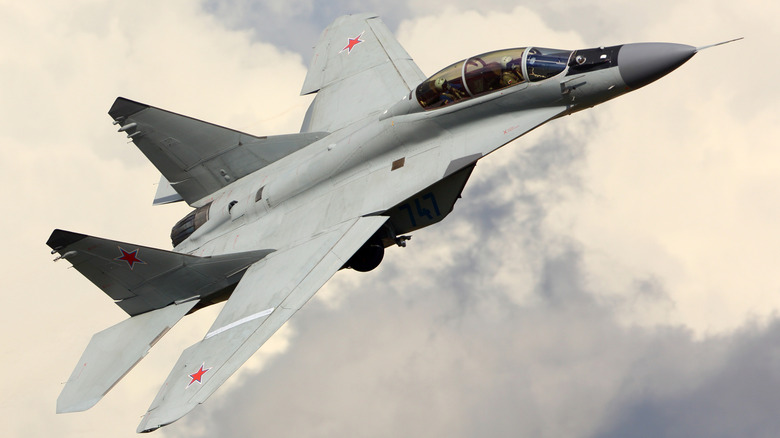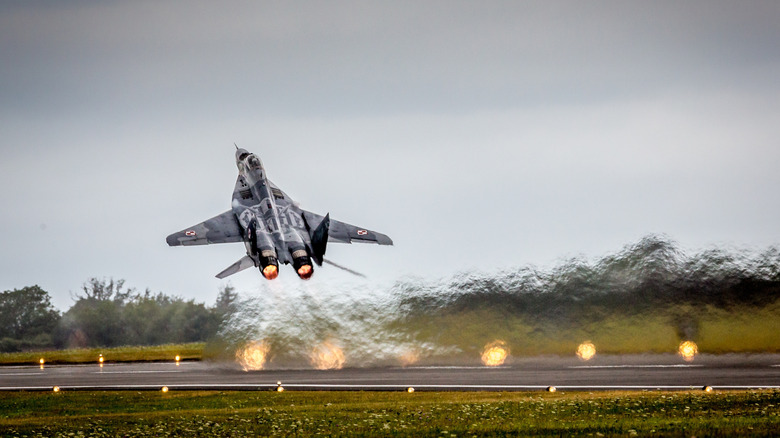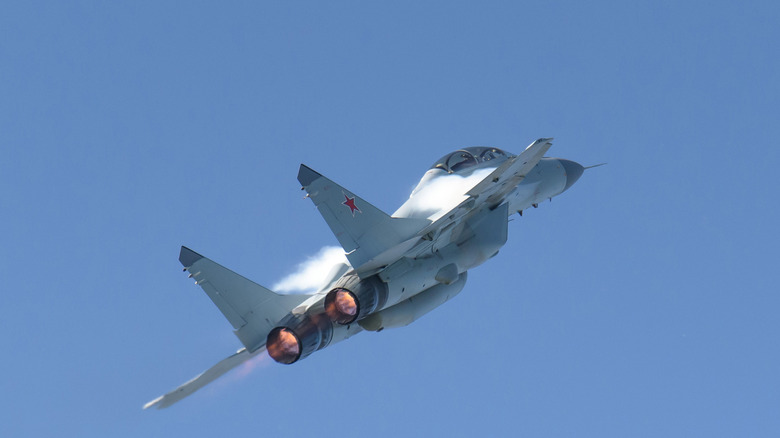How Many MiG-35s Does Russia Have?
The Mikoyan MiG-35, nicknamed the "Fulcrum-F," represents Russia's attempts at modernizing its fighter jet fleet. With a focus on military prowess and no aversion to conflict, the Kremlin attempts to stay ahead of the curve by adopting technologically advanced jets, bridging the gap between its older MiG-29, nimble MiG-31, and cutting-edge Su-57s.
Russia is looking to keep NATO's best planes in check with equal firepower, adopting new technology including an active electronically scanned array (AESA) radar and advanced weaponry. These jets were intended to be affordable options for the Russian air force, with a prioritization of maneuverability over stealth potential, leveraging a pilot's skill in a dog fight. The jet is intended to quickly establish air superiority, perform all-weather ground strikes, and aerial reconnaissance. It all sounds good on paper, yet the MiG-35 project has been rife with issues since its inception, much to the chagrin of Putin.
With hopes of the fighter planes joining Russia's current fleet, in addition to exporting them abroad to other military markets, there were ambitious goals from day one. But the MiG-35 project failed to gain much momentum with domestic production slowed, and little to no interest from other international buyers. Losing out to competition for European and Chinese contracts stymied production. The future of the MiG-35 now seems in question, so what is the current reality of this warplane, how many are actually in operation, and does it have a future?
Russia's current fleet and operational realities
When it comes to fighter jets, according to estimates, the Russian Aerospace Forces (VKS) has 12 Su-27s, 25 Su-57s, 70 MiG-29/UBs, 15 MiG-29SMTs, and two MiG-29UBTs. These jets make up the majority of Russia's current attack plane fleet. But what about the MiG-35? According to some estimates, the number of MiG-35 planes is between six to 10, comprising a small chunk of their fleet. The VKS initially ordered 24 of the jets for service back in 2017, with a target delivery time of 2027. Eight years later, as we approach 2027, being able to reach this target remains unclear. The current program feels like it may still be in a beta stage, with some hints at revitalization.
Operationally, the MiG-35 does offer some benefits in combat. It can deploy from relatively shorter runways, for one. And due to a reconfiguration of the air inlets, moving away from the louvred air systems and ventral intakes used in other Russian jets, the MiG-35 wing box area now allows for more space for fuel and avionics systems. Its deployment has been shrouded in mystery until recent reports back in May that the jets were used to patrol the airspace around Moscow in efforts to find Ukrainian drones. As an attack plane, these types of missions are out of character, perhaps suggesting the Kremlin is still unsure about the jet's role. And while it has stayed close to home, the MiG-35 has a total range of 1,250 miles, with in-flight refueling capabilities.
Revival and the future
Due to the ongoing conflict in Ukraine, Russia appears to be reviving the MiG-35 project, meaning the initial order in of 24 units may eventually be realized. No one will ever know if Putin intended to start the war back then, but clearly, the two nations now seem bogged down in brutal and bloody battle, which depletes military resources and equipment. To date, according to estimates, Russia has lost 347 total aircraft in the conflict, with dozens of jets being shot down. These need to be replaced, and the new MiGs are potential candidates.
The newest iteration of the MiG-35, in this relaunch, is said to include updated technologies, borrowing from the fifth-generation Su-57. The jet will have upgraded long-range air-to-air missiles, the most modern AESA radar, and a new engine based on the Su-57 power plant. It's even purported to have a helmet-mounted targeting system for the pilot.
Whether or not these planes end up over the skies of Ukraine remains to be seen, but there has also been talk of Belarus and North Korea showing interest in them recently, as both nations look to upgrade their respective fleets. What we do know is that the Ukrainian conflict has been anything but predictable, with a constantly evolving battleground reality. In such a volatile and shifting war with drones, AI, and foreign fighters, the role of the MiG-35, how many more will be built, and where they will be deployed remains to be seen.


